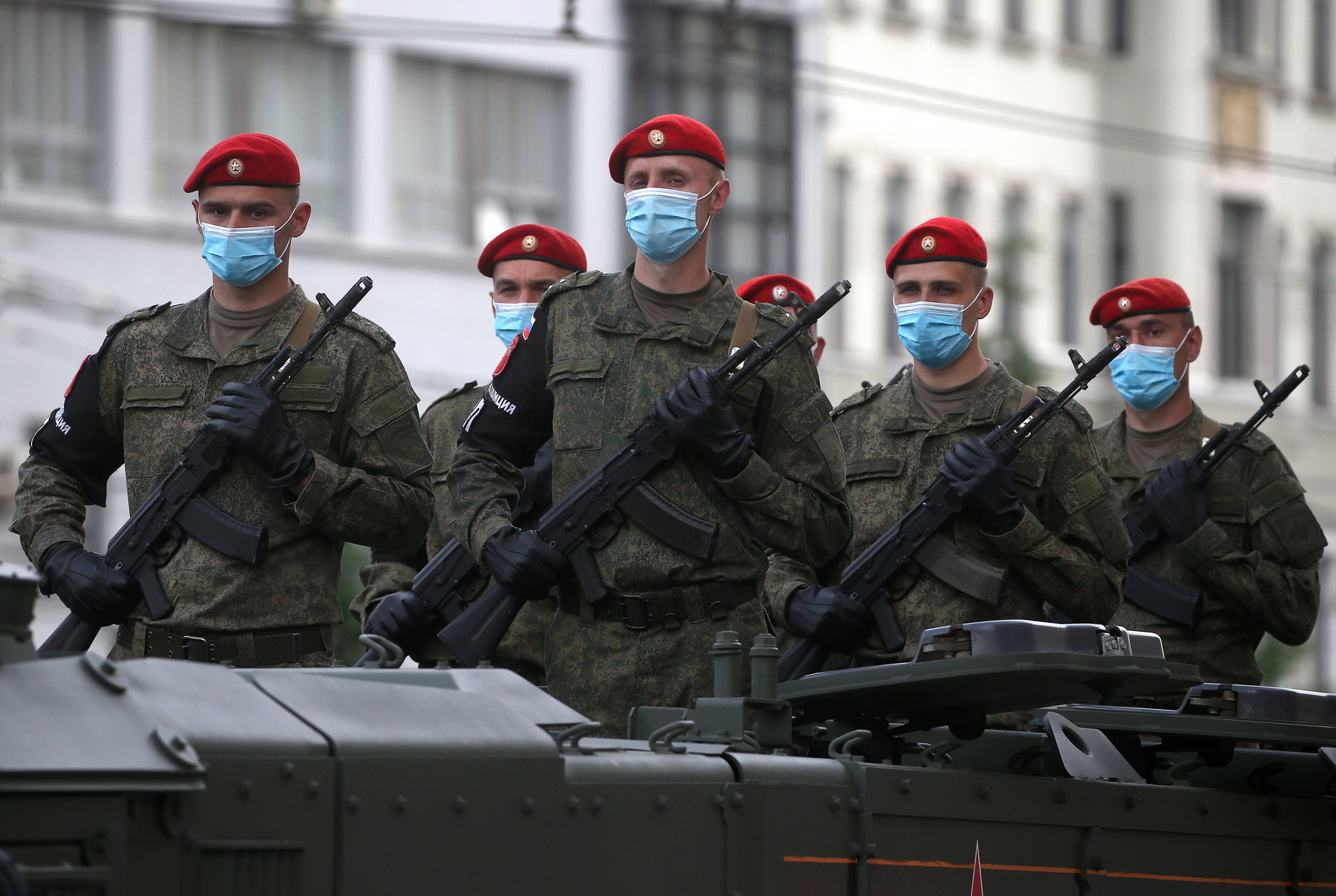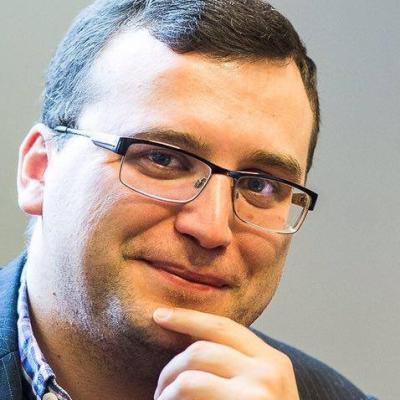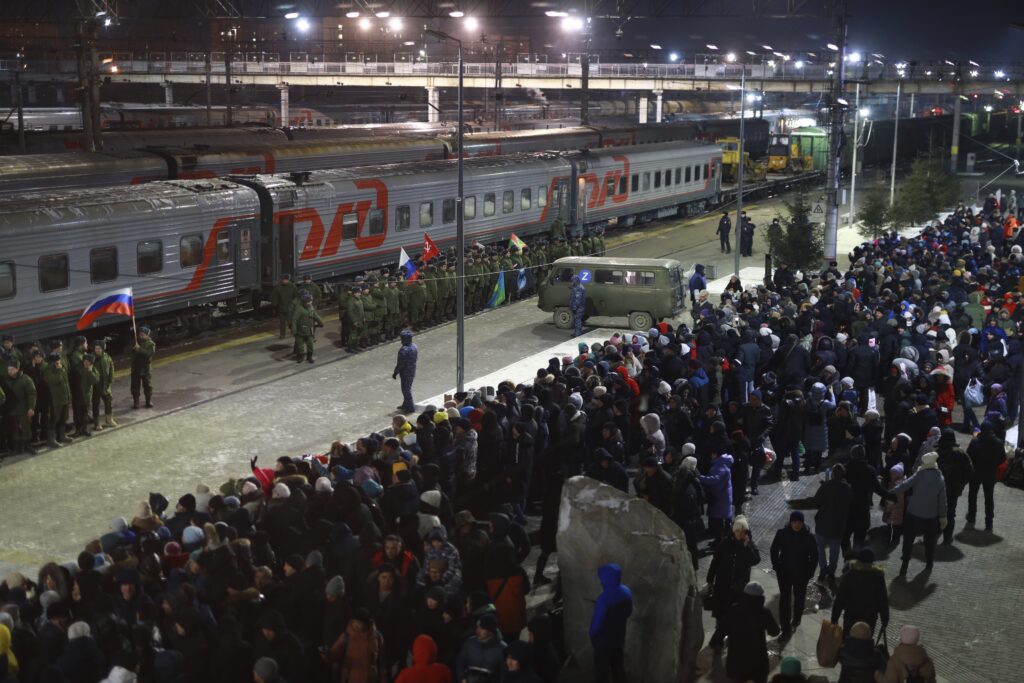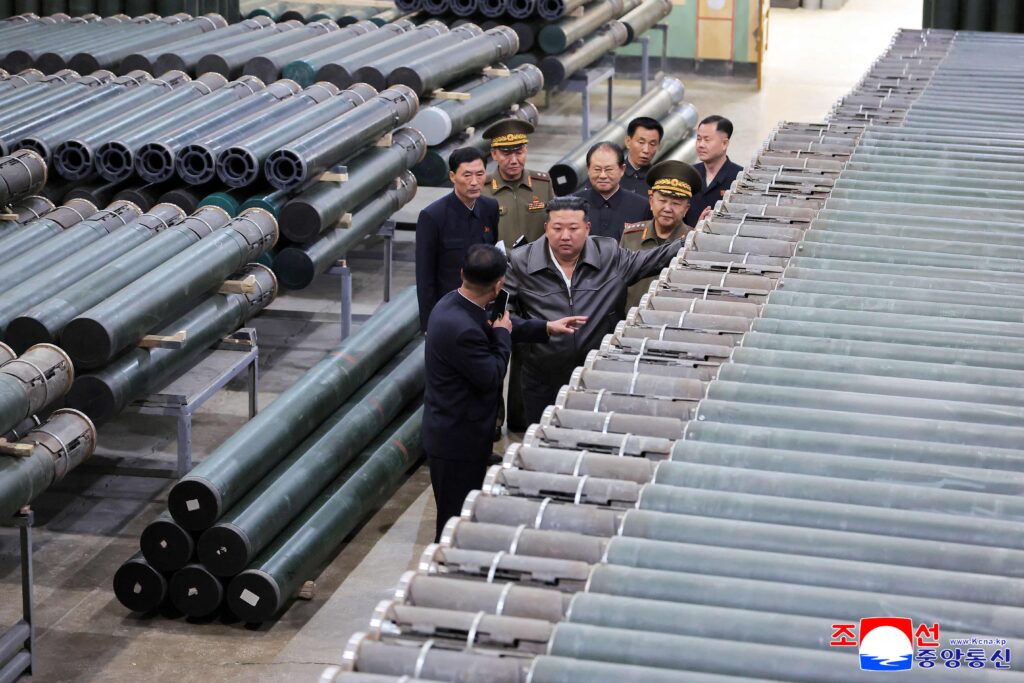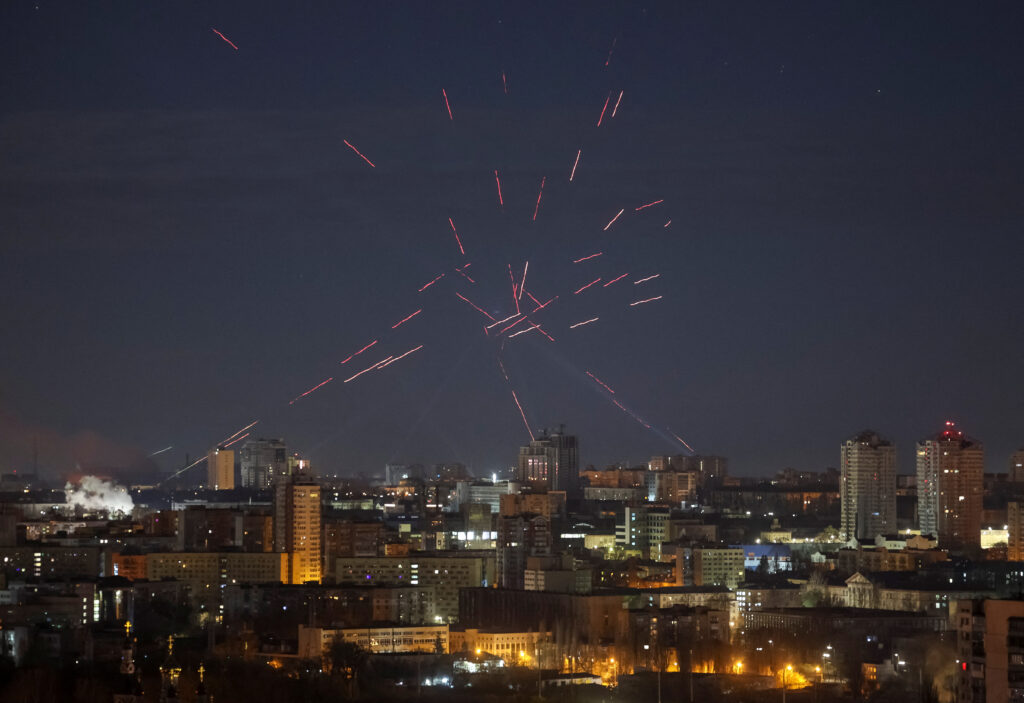Since the beginning of the coronavirus pandemic in March 2020, the Russian Armed Forces have been building up their self-image as one of the main fighters against the disease, not only within Russia but all over the world. It will suffice to mention the evacuation of Russian citizens from China by military transport aircraft, the Russian military extending a helping hand to Italy and the construction of 16 new military hospitals. The true usefulness and necessity of these initiatives is doubtful. Yet the Russian military command was more interested in the immediate effect. What is indeed of real interest here is the way the armed forces have withstood the pandemic.
Initially, the Ministry of Defence was not keen on making the issue of coronavirus in the armed forces public. Then, it did so in late April, mostly to reassure the parents of conscripts and cadets. Moreover, it was involved in a ‘bureaucratic competition’ between different authorities, so it wanted to demonstrate success in fighting the epidemic.
By the end of May 2020, the leadership had calmed. The situation was manageable; the Kremlin and Russian society at large had the feeling that the pandemic had almost entirely steered clear of the army. Moreover, the military helped society and the state handle the situation. The armed forces’ attitude to the epidemic has had a ‘psychotherapeutic effect’ on the authorities; the problem of the quality of medical services provided to the military is unlikely to make it onto the government’s agenda.
Epidemic response, military style
The main source of information is the Ministry of Defence’s newsletter on preventing the spread of the novel coronavirus, published every day since April 26, 2020. Although the data are obviously politically biased, they provide a broad picture of the situation in the armed forces over several months.
From March 1 to September 15, 2020, there were 12,066 confirmed coronavirus cases in the armed forces, including military school cadets. During the same period, 1,509 cases among civilian personnel were confirmed. Officially, the number of Russian servicemen is just over 1 million, with at most 889,000 civilian employees. The real number of uniformed service members, based on open-source and indirect data, can be estimated at 750,000, while the number of civilian personnel definitely does not exceed 700,000. Thus, in the first half year of the epidemic, 1.6% of the military and 0.2-0.25% of civilian personnel contracted COVID-19 (based on officially confirmed coronavirus cases).
This can be explained by looking at the overall picture of the virus’s spread across Russia: approximately 1.07 million confirmed cases at the time of writing — 0.74% of the population. It is known that the number of confirmed cases depends on the number and quality of tests, which in turn depends on the approach to testing. And there is a standing practice that only those who sought medical help during the pandemic were tested. The hospitals themselves were the sites of some of the main outbreaks. Only a very small proportion of cases were detected by screening employees of government agencies and large companies.
The military leadership focused on the spread of the disease among uniformed service members. The needs of civilian personnel were put on the back burner. This can be explained by at least three factors. First, under the conditions of uncertainty in March-April 2020, the spread of the disease among service members was perceived as a very serious threat. Second, symptomatic soldiers, especially privates and non-commissioned officers, almost inevitably fell under medical supervision. The same applies to their fellow service members: the number of healthy soldiers, sailors and airmen who underwent medical check-ups has exceeded 39,000 at the time of writing. Third, pneumonia outbreaks in Russian garrisons in previous years had caused a public outcry and affected the image of the armed forces and the Russian authorities in general. The generals didn’t want any more of these incidents.
When it comes to the civilian personnel, a different approach is taken by default: only those who seek medical help on their own initiative attract physicians’ attention (and affect the statistics if they test positive).
‘Virus maths’ in the army
In addition to information on confirmed coronavirus cases in the armed forces, we also have data on the number of hospital admissions with a diagnosis of COVID-19 among military and civilian personnel. These figures provide even better insight into the situation.
Two groups of service members receive unequal treatment. One of them is members in military units, formations, command units and military administration (Figure 1). The other is those who serve while studying at military institutions of higher learning (Figure 2). The latter group, about 50-55,000 people, includes cadets in officer training, students of training programmes for warrant officers and lecturing officers. Then there are the civilian personnel (Figure 3). Each group has confirmed coronavirus cases. The information is obtained by summing up data on active coronavirus cases and the number of soldiers that recover each day. And there is information on how many of the confirmed cases end in hospitalisation, i.e. statistics on the disease, with symptoms of varying degrees of severity. A comparison between these groups based on the number of hospitalisations alone is shown in Figure 4.
As can be seen from all these figures, the number of active coronavirus cases in all three groups grew rapidly until mid-May, when it began to decline sharply. At the same time, both this growth and the subsequent decline diverged from the picture illustrating the numbers of COVID-19 inpatients. The approximate correlation between these two indicators can only be traced since late June and early July in each of the groups.
It turns out that the leadership of the Ministry of Defence initially tried to implement tactics of extended testing of uniformed and civilian personnel. However, they abandoned this approach as early as May. The authors of the bulletin report day in and day out that the army’s laboratories are capable of performing up to 11,500 tests per day. In practice, only those who suspect they may have the disease are tested. A key role was likely played by realising that mass testing was politically unreasonable due to a shortage of reliable tests.
The hospitalisation dynamics in these three groups can be explained by fluctuations in their activity. The situation in the garrisons had been relatively stable, although accompanied by a gradual increase in the number of confirmed cases through May 20, as new conscripts (135,000) joined the army in spring, causing a spike in the number of cases. By that time, the command had already treated the situation with cold calculation, believing that the military as a whole, and young soldiers in particular, were not in the risk groups for the disease. By mid-June, the situation had largely stabilised; after a peak on July 5-7, the number of hospitalisations began to decline. By mid-September, this number was almost equal to the levels of early May.
The military academies have a different pattern: the end of the academic year, then military exercises, followed by holidays, then a return to the schools and the intake of new cadets in autumn resulted in spikes. At the same time, the cumulative peak of the epidemic in the armed forces could be observed in the second half of June and -early July.
The number of civilian inpatients did not fluctuate so strongly. However, while as many as several dozen soldiers recover from the illness every day, only a few civilians do. Simply put, soldiers are hospitalised even when the disease is relatively easy to treat, while civilian personnel are hospitalised mainly in complicated cases.
One of the reasons is that the military personnel are almost always within sight of their superiors; in the barracks there are limited opportunities for outpatient treatment, let alone self-treatment. When civilians have symptoms, they try to postpone seeing a doctor. If they seek help, they prefer to be treated at home. In addition, even if they do go to a doctor, they are mostly treated without testing.
The epidemic has also revealed the problematic quality of military healthcare. The Ministry of Defence has officially provided 6,745 beds for coronavirus patients. They were barely one-fifth full at the peak of the epidemic in early July. And the 16 medical centres of 100 beds each opened in spring in various regions of Russia were only half full, even taking into account inpatients not working for the military. At the same time, dozens of soldiers and civilian employees were treated in civilian hospitals rather than in military ones. By mid-September, there had only been a few servicemen and fewer than two dozen civilian personnel treated for COVID-19 in civilian hospitals, where it seems that those with the worst symptoms are sent. Simply put, despite words of praise from the military leadership, the military healthcare system falls short of providing qualified medical care to those who need it most.
It can be concluded that by the end of spring, the military leadership had by default adopted a strategy aimed at developing herd immunity. By mid-summer, the same approach had been taken up by the government as a whole. Not only were the Russian military the first to begin testing the country’s coronavirus vaccine, but the herd immunity strategy was also tested on them first. The problem is that although this experiment has had a soothing effect on the Russian authorities, it did not allow them to adequately assess the effectiveness of military medicine, or the efficiency of the Russian healthcare system as a whole.
Figure 1. Incidence of coronavirus among servicemen in military units, formations, command units and military administration

Figure 2. Coronavirus among cadets at military academies

Figure 3. Coronavirus among the civilian personnel of the armed forces

Figure 4. No. of COVID-19 inpatients in the armed forces

